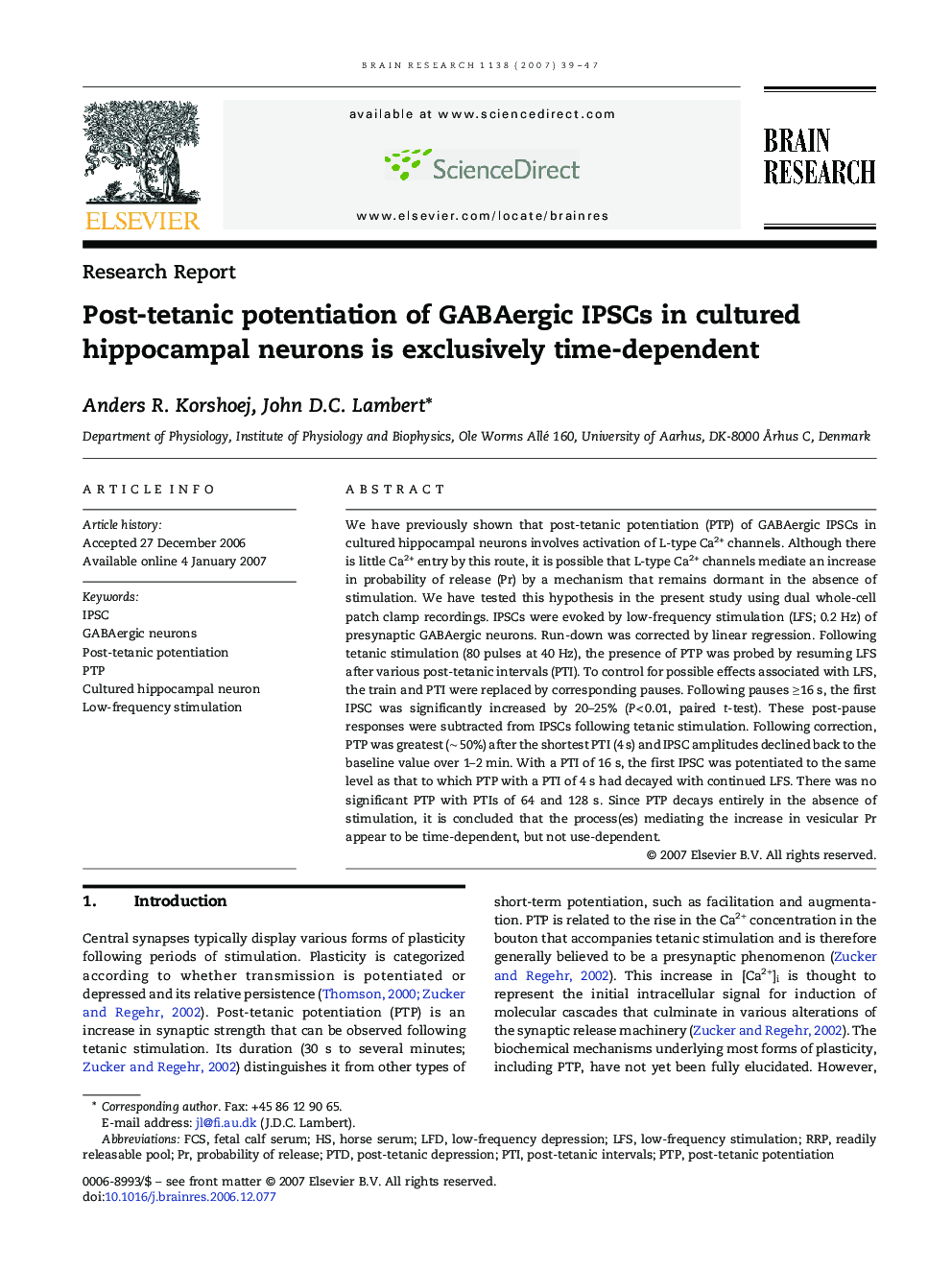| Article ID | Journal | Published Year | Pages | File Type |
|---|---|---|---|---|
| 4331441 | Brain Research | 2007 | 9 Pages |
We have previously shown that post-tetanic potentiation (PTP) of GABAergic IPSCs in cultured hippocampal neurons involves activation of L-type Ca2+ channels. Although there is little Ca2+ entry by this route, it is possible that L-type Ca2+ channels mediate an increase in probability of release (Pr) by a mechanism that remains dormant in the absence of stimulation. We have tested this hypothesis in the present study using dual whole-cell patch clamp recordings. IPSCs were evoked by low-frequency stimulation (LFS; 0.2 Hz) of presynaptic GABAergic neurons. Run-down was corrected by linear regression. Following tetanic stimulation (80 pulses at 40 Hz), the presence of PTP was probed by resuming LFS after various post-tetanic intervals (PTI). To control for possible effects associated with LFS, the train and PTI were replaced by corresponding pauses. Following pauses ≥ 16 s, the first IPSC was significantly increased by 20–25% (P < 0.01, paired t-test). These post-pause responses were subtracted from IPSCs following tetanic stimulation. Following correction, PTP was greatest (∼ 50%) after the shortest PTI (4 s) and IPSC amplitudes declined back to the baseline value over 1–2 min. With a PTI of 16 s, the first IPSC was potentiated to the same level as that to which PTP with a PTI of 4 s had decayed with continued LFS. There was no significant PTP with PTIs of 64 and 128 s. Since PTP decays entirely in the absence of stimulation, it is concluded that the process(es) mediating the increase in vesicular Pr appear to be time-dependent, but not use-dependent.
